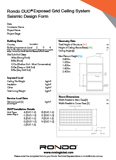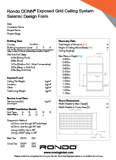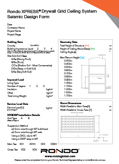Do Earthquakes Actually Happen In Australia?
Although Australia sits on its own tectonic plate, the continent and its built environment are still vulnerable to earthquakes and intraplate earthquakes can and do occur.
In the last year alone, Australia has had 13 earthquakes, with the most significant being a 6.6 magnitude earthquake in Broome in July this year.
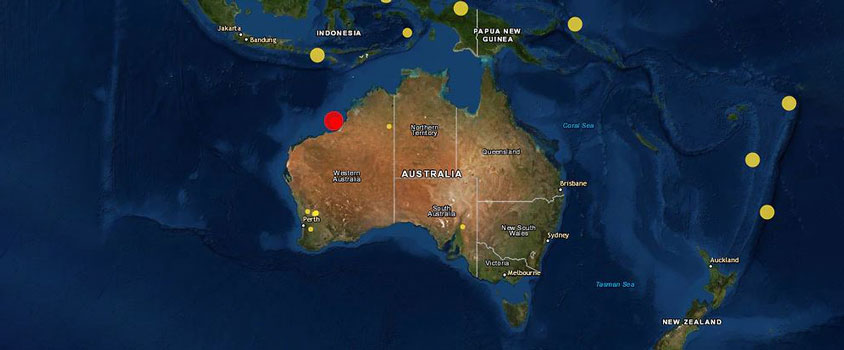
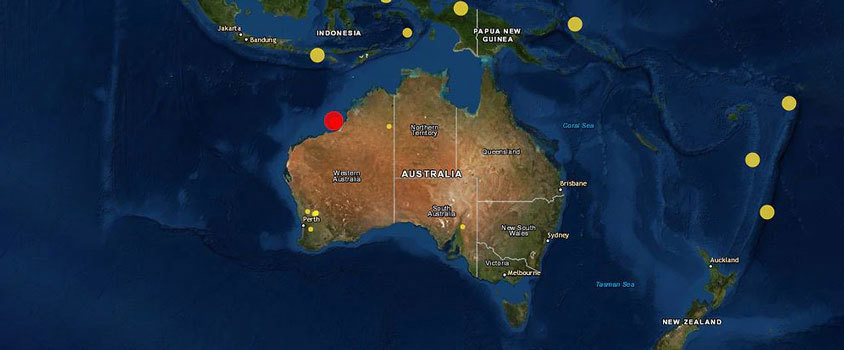
Does Your Project Need To Be Assessed For Seismic Design?
Short answer is yes. All buildings and their parts need an assessment of their seismic requirements, in accordance with the National Construction Code (NCC). However, it is their ‘Level of Importance (LOI)’ which determines the extent of the seismic design requirements.
The NCC defines the LOI for the different building types, ranging from 1 through to 4, with LOI 1 being the lowest level. The LOI is typically established through occupancy levels and function of the building within the community or broader. The following Table B1.2a from the NCC provides a brief description of the building types applicable to each LOI.
| IMPORTANCE LEVEL | BUILDING TYPES |
| 1 | Buildings or structures presenting a low degree of hazard to life and other property in the case of failure. |
| 2 | Buildings or structures not included in Importance Levels 1, 3 and 4. |
| 3 | Buildings or structures that are designed to contain a large number of people. |
| 4 | Buildings or structures that are essential to post-disaster recovery or associated with hazardous facilities. |
Some residential buildings of Importance Level 1 are “deemed-to-comply” under the NCC, and therefore, do not require a specific seismic design. Conversely, buildings that fall into Importance Level 4 such as hospitals, are essential to post-disaster recovery and therefore require a greater seismic load (or level of safety) to be considered in their design.
For structures of Importance Level 2 or greater, the seismic actions on the walls and ceilings in these buildings needs to be considered, in conjunction with any other expected actions, such as wind and occupancy loads. The NCC provides the minimum seismic event to be considered based on the LOI of the building, and the Australian Standard AS1170.4 `Earthquake actions in Australia’ provides the method of assessing the seismic actions applicable to the walls and ceilings in the building.


What are the Main Factors affecting Seismic Loads?
In order for a seismic assessment to be completed it is essential that certain projects specific information be provided, and early in the design phase. For the seismic design of the Rondo Wall and Ceiling Systems, the following information is required;
- Building Importance Level – this information is usually found on the Structures Note (S01 Drawing).
- Site sub-soil class – This is the details of the foundations for the building, as this will affect the building response to the earthquake. From strong rock to very soft soil; Class Ae, Be, Ce, De, or Ee. This information is also found on the Structures Note (S01 Drawing).
- Building location – this will establish the applicable seismic hazard factor.
- Architectural drawings – this is used to develop a scope of works, and also to provide the intimate project specific details for the walls and ceiling systems to facilitate the seismic design.
- Other loads - Include details of any FF&E attached to the walls or ceilings, as the seismic actions are very much controlled by mass.
When does Seismic Load Govern the Design?
There is no simple answer to this question and the seismic requirements need to be assessed in all cases against the other loading scenario’s (such as wind loading) to determine which action results in the higher loading to the wall or ceiling system. Eg; if the wind loading on a partition is greater than the seismic loading, it is the wind loading that governs the design or conversely, designing the partition for the resulting wind actions will automatically ensure the system complies with the seismic requirements.
The below image shows the different design loads applied to an internal wall or ceiling due to a wind load versus a seismic load.
To determine the governing factor, Rondo gathers all information required for the projects’ seismic and wind loads, and then confirms that the wall or ceiling is adequate for both.

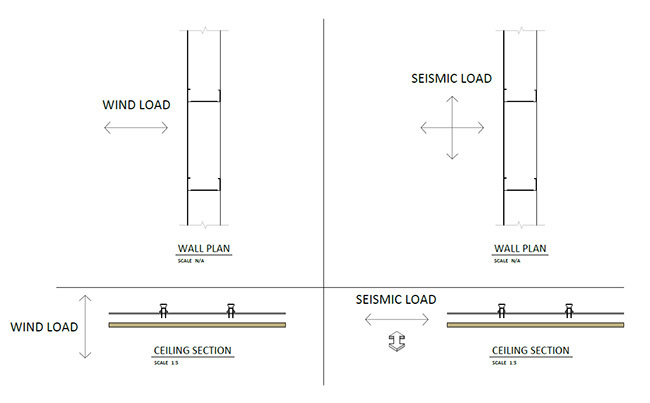
Rondo has been providing seismic designs to projects around Australia for many years, and there are numerous projects that incorporate a Rondo Seismic Ceiling or Wall System, such as the New Royal Adelaide Hospital, Perth Children’s Hospital and Gosford Hospital, to name just a few.
Greater Seismic Focus in Queensland
More recently, in Queensland, we have seen a greater focus on seismic design and for buildings of Importance Level 2 or greater, this has required a Form 15 Design Certificate. This document confirms the wall or ceiling system design complies to the NCC requirements, not only for seismic design.
If this is the case, please speak with your Rondo Technical Representative in the early stages of your project as this form takes a considerable amount of time and resources to prepare.
Our Market-leading Seismic Solutions
Rondo manufactures and supplies industry-leading wall and ceiling systems, which are specifically designed to resist seismic loads.
Our seismic solutions were developed through the use of Australian and New Zealand Standards, comprehensive in-house and third-party testing, and extensive research into the latest seismic developments.
Seismic solutions are available for;
- KEY-LOCK® Concealed Suspended Ceiling System
- XPRESS® Drywall Grid Ceiling System
- DUO® Exposed Grid Ceiling System
- DONN® Exposed Grid Ceiling System
- Steel Stud and Track Drywall Framing System
- TRACKLOK® bracing for Wall Systems (exclusive distributor in Australia)
- GRIDLOK® bracing for Ceiling Systems (exclusive distributor in Australia)
Rondo seismic ceiling systems
Depending on the room size and seismic loads, we will design either a perimeter fixing or plenum bracing option for your Rondo Ceiling System, so that the seismic forces are adequately transferred to the structure.
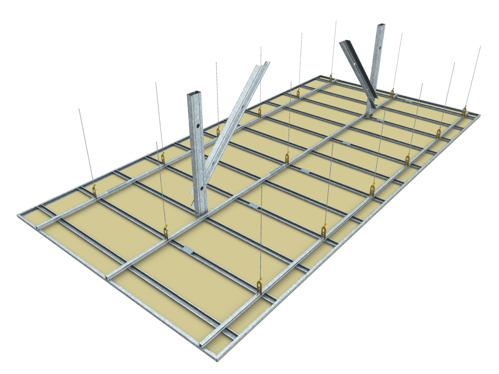
For large open areas, your Rondo Ceiling System is restrained by evenly distributed braces in the plenum space, with sliding connections to all perimeters.
To brace your Ceiling System, Rondo offers all Australian customers exclusive access to a range of GRIDLOK® bracing components, that speed up installation versus traditional back-bracing methods. GRIDLOK braces are suitable for our Concealed Grid, Exposed Grid and Drywall Grid Ceiling Systems.
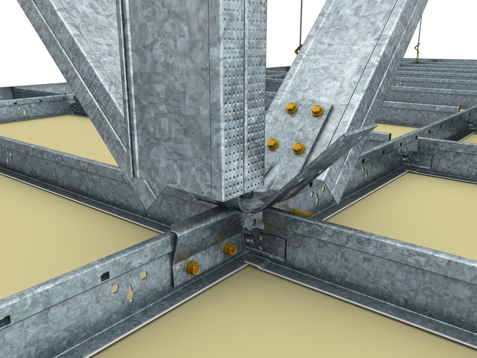
Rondo Seismic Wall Systems
The Rondo Steel Stud Seismic Wall System allows the wall to move, permitting an articulation of the wall panel and prevents cracking at its junction. This is particularly relevant to Importance Level 4 buildings, where post disaster functionality is required.
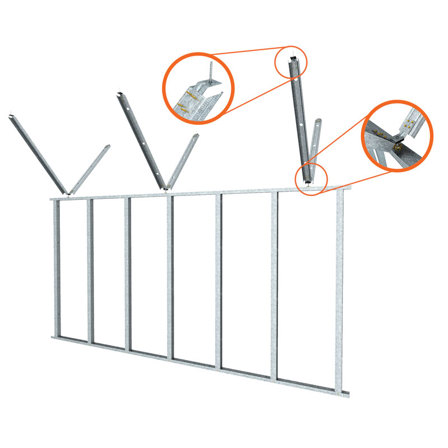
Bracing of your Seismic Wall System can be achieved with the use of TRACKLOK® bracing components which Rondo brings exclusively to customers in the Australian market. TRACKLOK® is designed for bracing partition walls, with a pre-engineered and easy to install range of clips.
Rondo Seismic Requests
If you have a project requiring Seismic Design, there is information your Rondo Technical Representative will need from you to assist you with your enquiry.
Two easy ways to submit your request;
- Download and fill out a Rondo Seismic Request Form and email it to your Technical Rep;
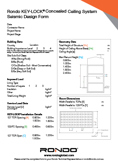
- Log in and use our Seismic Design Wizards and simply email the result to your Technical Rep




